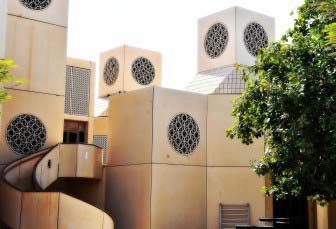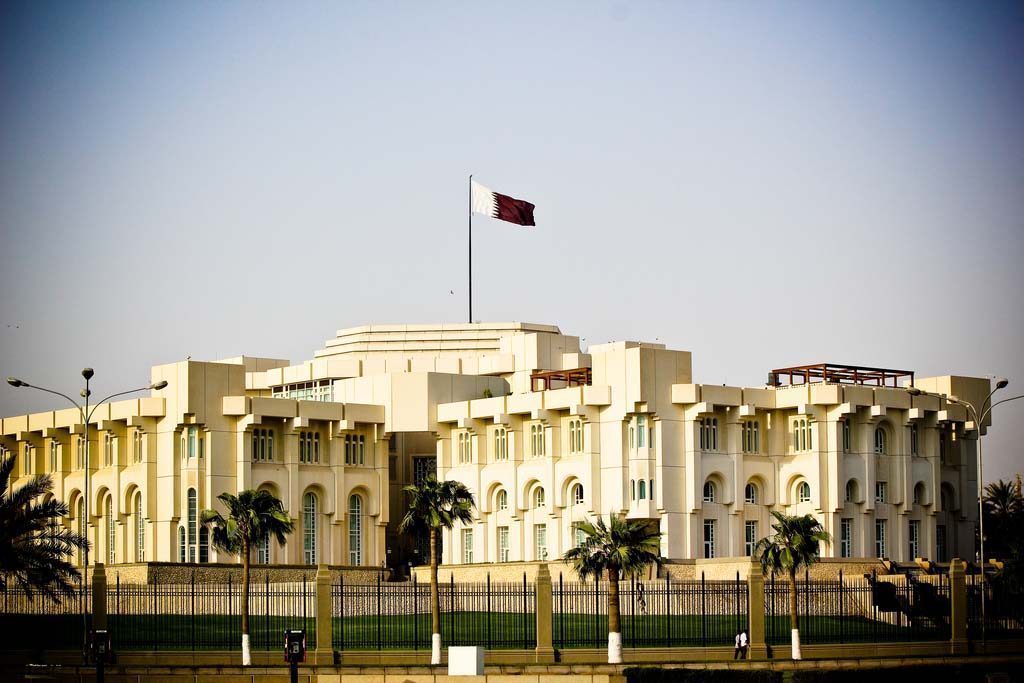
Qatar’s Emir has approved a new budget for 2016 that dramatically cuts expenditures in anticipation of the country’s first financial shortfall in 15 years.
Qatar plans to spend QR202.5 billion next year, which is 7.28 percent or QR15.9 billion less than its last fiscal year.

That’s despite the fact that outlays on government salaries, wages and major projects – such as major transportation initiatives and preparations for the 2022 World Cup – are increasing.
The government is grappling with a massive drop in revenue caused by lower oil and gas prices that are forecast to leave a hole of QR46.5 billion in next year’s budget.
To cover the financial shortfall, the country’s finance minister said the nation plans to borrow money rather than tapping into the massive savings held by the Qatar Investment Authority.
The release of the budget figures came on the same day that Qatar’s Ministry of Development Planning and Statistics said the country’s economy was expanding at a much slower rate than expected.
The ministry has cut its GDP growth forecast for 2015 by nearly half to 3.7 percent, down from a prediction of 7.3 percent made in June, and lowered its expectations for 2016 and 2017.
Cutbacks
There are few details in the high-level financial summary released yesterday about where upcoming budget cuts will occur.

Finance Minister Ali Shareef Al Emadi said in a statement that the cuts would not have any negative impact on Qatari citizens or the quality of government services. Instead, he suggested savings would be achieved by trimming fat from government operations:
“The current situation provides an opportunity to achieve further efficiency, especially in the operating costs of various government departments.”
Many state-funded organizations in Qatar, including Qatar Museums, Qatar Foundation and Al Jazeera, have already been forced to tighten their belts over the past year by reducing programming and laying off expats.
Additionally, the head of Katara Cultural Village said this week that his organization’s budget would be cut next year.
Education and healthcare
Elsewhere, it appears that education spending will decrease in 2016.
The new budget, the first since the government shifted its fiscal year to end on Dec. 31 rather than March 31, allocates QR20.4 billion to the sector.
While the finance ministry says this is an increase, the education sector was actually allocated QR26.3 billion in the last full fiscal year.
On the capital side, the budget contains funding for the construction of 18 new schools and six kindergartens in 2016. That’s down from 85 new schools in 2014-15.

A physical expansion of Qatar Foundation, which likely refers to Education City, is also planned.
Meanwhile, Qatar University – which unveiled plans for a massive expansion in 2014 – is poised to receive “a new hostel, students’ affairs building and campuses for the faculties of engineering, education, law, medicine and medical sciences, in addition to a laboratory for the Faculty of Sciences,” the ministry statement said.
Meanwhile, spending on healthcare appears poised to increase to QR20.9 billion up from QR15.7 billion in 2014-15.

The budget summary also highlights several healthcare capital projects, including pumping more money in the much-delayed Sidra Medical and Research Center, which recently prepared a new five-year plan that included trimming its workforce.
Additionally, funds will be allocated to establish five new health centers and a cancer treatment center, as well as complete Hamad General Hospital and Hamad Medical City.
More money will also be allocated to housing for Qatari citizens. As in 2014-15, some 3,700 land plots will be developed next year for distribution to nationals. Meanwhile, funding for housing loans through the Qatar Development Bank will increase by 25 percent to QR2 billion.
Savings untouched
On the revenue side, the government expects to collect QR156 billion next year, a 13.4 percent drop compared to the QR225.7 billion in the previous fiscal year.

Qatar is highly dependent on the sale of oil and gas to finance government spending, and next year’s budget assumes that the price of oil averages $48 a barrel in 2016.
This means that if oil stays around its current price of $36 a barrel in 2016, Qatar’s budget deficit could widen further.
To finance the expected shortfall, Qatar will borrow money from local and foreign lenders, Al Emadi said. Unlike Saudi Arabia, which is liquidating assets to cover its budget shortfall, Qatar has no plans to tap into its savings, Al Emadi said.
“The State of Qatar will maintain these reserves and investments. The 2016 budget does not include any income from the reserves at (Qatar Central Bank) or investments of (the Qatar Investment Authority), as this is being reinvested to boost the country’s reserves and investments, in order to further enhance Qatar’s financial position.”
The lack of a detailed financial breakdown in this year’s budget summary comes despite a government promise in 2014 to release more information as part of a new “open data” policy.
The opaqueness of Qatar’s public budget information has come under international criticism in the past, including by credit rating agencies that have said Qatar could achieve a higher ranking – which would allow it to borrow money more cheaply – if it was more transparent.
Economic outlook
In a separate report released yesterday, the Ministry of Development Planning and Statistics (MDPS) predicted Qatar’s economy will expand by 3.7 percent in 2015. That’s down from the 6.1 percent growth recorded in 2014.

The explanation, the ministry said, “lies entirely in the performance of the oil and gas sector.”
Specifically, MDPS noted that its expected recovery in energy prices failed to materialize, which had the knock-on effect of discouraging energy firms from making additional investments in Qatar. Additionally, the start of RasGas’ Barzan gas plant was pushed to 2016, it said.
The country’s non-hydrocarbon sectors, led by construction of massive infrastructure projects, is expected to grow by 10.1 percent this year.
But with work on many building projects scheduled to plateau in the coming years amid slowing population growth, MDPS predicts growth in several service sectors – such as transportation and real estate – will wane.
Following GDP growth of 3.7 percent this year, the ministry forecasts the economy will grow 4.3 percent in 2016 and 3.9 percent in 2017.
Thoughts?







